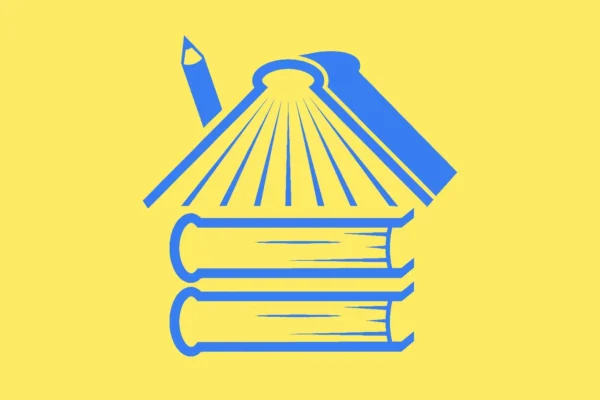
6 Reasons Why Interest Only Mortgages Are Complicated

If you’re on the hunt for a new home, you’re likely also looking for a mortgage that makes sense in this era of high interest rates.
One option that you may have come across is the interest-only mortgage.
Though this type of home mortgage has a few benefits, such as lower initial monthly payments, it’s not always in your best interest to take out an interest-only loan. In this article, we’ll look at why this loan may not be in your best interest and outline some of the potential downfalls.
What is an interest-only mortgage?
An interest-only mortgage is a home loan arrangement where borrowers are required to make monthly payments that cover only the interest on the loan for a specified period, usually the initial few years of the mortgage term.
Unlike traditional mortgages, where each payment includes both principal and interest, in an interest-only mortgage, the borrower is not reducing the loan’s principal balance during this initial phase. This results in lower monthly payments during the interest-only period.
However, after this period ends, typically after 5 to 10 years, the mortgage transitions into a fully amortizing loan, and borrowers must start repaying both the principal and interest.
From Mortgages to Home Equity Loans
Our local, award-winning lending team is ready to help you begin today.
6 Potential Downfalls of Interest-Only Mortgages
Borrowers should carefully consider their financial situation and long-term goals before opting for an interest-only mortgage. Here are eight potential downfalls of this type of mortgage.
1. You don’t start building equity immediately.
During the interest-only period, borrowers are not paying down the principal balance of the loan. As a result, they miss out on the opportunity to build home equity right from the start of their homeownership journey.
Home equity is more than just a number; it’s a source of financial stability and security. Without it, you may not have the financial cushion needed to weather unexpected expenses or to tap into for future investments. This lack of equity can be particularly worrisome if property values in your area stagnate or decline, as your financial stake in the property remains static.
2. You may face payment shock when it converts to a fully amortizing loan.
The allure of lower initial payments during the interest-only period can tempt some borrowers to take on larger loan amounts than they can comfortably afford.
However, this decision can come back to haunt you when the initial period ends and the mortgage converts to a fully amortizing loan. The abrupt increase in monthly payments can catch borrowers off guard, leading to financial strain. If their financial situation hasn’t improved or has worsened during the interest-only period, managing these higher payments can be extremely challenging and may even put their homeownership at risk.
3. You’ll face higher long-term costs.
One of the significant drawbacks of interest-only mortgages is the higher long-term cost.
Because borrowers are not reducing the principal balance during the interest-only period, they end up paying more in interest over the life of the loan compared to a traditional amortizing mortgage. While the initial lower payments can seem appealing, the overall cost of the mortgage can be substantially higher, potentially resulting in thousands of dollars in extra interest expenses over the years, despite the initial savings.
4. There are market risks.
An often-underestimated risk of interest-only mortgages is tied to market fluctuations. If property values decline during the interest-only period, borrowers may find themselves in a precarious financial situation known as being “underwater.”
This means that they owe more on the mortgage than the home is worth, making it difficult to sell the property without incurring a loss or to refinance the loan. The unpredictability of real estate markets can add a layer of uncertainty to your financial planning.
5. Eligibility is stricter.
Regulatory changes implemented after the 2008 financial crisis have made qualifying for interest-only mortgages more challenging.
Lenders typically require borrowers to have higher credit scores and larger down payments to be eligible. These stricter criteria can limit access to these mortgages and may force borrowers to put down more money upfront than they initially anticipated. For some, this can be a hurdle that disrupts their homeownership plans or stretches their finances thin.
6. For investors, interest-only loans are speculative.
While interest-only mortgages can be enticing for buyers aiming to profit from property appreciation, it’s essential to recognize the speculative nature of this approach.
Homebuyers betting on future property value increases to secure their returns face inherent market risks. Economic downturns or shifts in local real estate markets can result in unexpected outcomes, potentially eroding the anticipated gains and leading to financial losses.
Balancing investment strategies with a thorough understanding of market conditions is crucial in this context.
Alternatives to Interest-Only Mortgages
There are several alternative mortgage options that may be more suitable for borrowers who want to avoid the potential downsides of interest-only mortgages.
Here are some other mortgage options to consider:
- Fixed-rate mortgage: A fixed-rate mortgage offers a stable interest rate and monthly payment throughout the life of the loan. This provides predictability and can be an excellent choice for borrowers who want to budget with certainty. Fixed-rate mortgages are available in various terms, such as 15, 20, or 30 years.
- Adjustable-rate mortgage (ARM): An adjustable-rate mortgage offers an initial fixed-rate period, typically 3, 5, 7, or 10 years, followed by periodic adjustments based on prevailing interest rates. While ARMs can have lower initial interest rates than fixed-rate mortgages, they carry the risk of future rate increases. They can be suitable for borrowers who plan to sell or refinance before the fixed period ends.
- FHA loans: These loans, backed by the Federal Housing Administration, often have more flexible qualification requirements and lower down payment options, making them accessible to borrowers with limited funds.
- VA loans: Available to eligible veterans and active-duty military members, VA loans typically offer competitive interest rates, no down payment requirement, and lenient credit standards. They can be an excellent choice for those who qualify.
- USDA loans: The U.S. Department of Agriculture offers loans to eligible rural and suburban homebuyers with low to moderate incomes. These loans often feature lower interest rates and no down payment requirement.
Not sure which loan option is right for you? Get in contact with a local mortgage loan officer that can help you determine which loans you qualify for and which make the most sense for your financial situation.
Know the Risks
Interest-only mortgages may offer lower initial payments and appeal to certain borrowers, but they come with substantial risks and potential downsides. Before taking out an interest-only mortgage, always carefully assess your financial goals, risk tolerance, and long-term plans and consider other suitable options out there.


